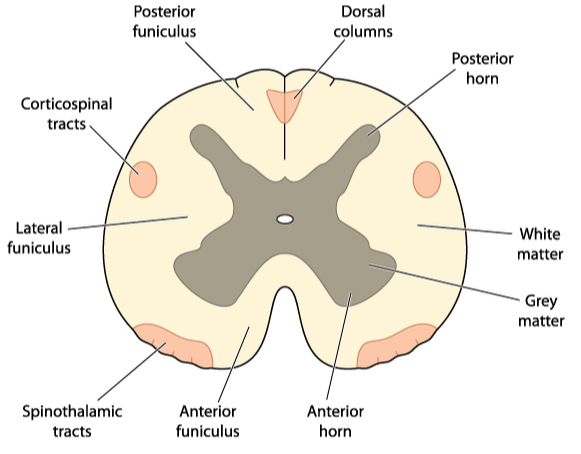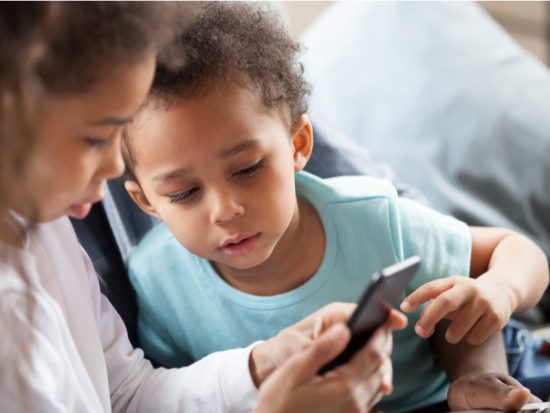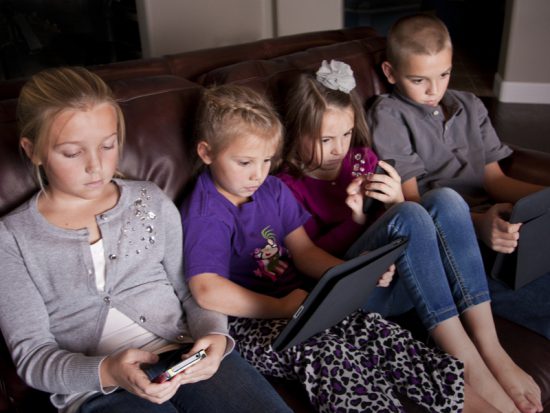We’ve long known that too much screen time is not good for kids. Now we know that more screen time actually changes the shape of the brain—at least for the preschool-age children in one Cincinnati Children’s Hospital Medical Center study.
The study, published in JAMA Pediatrics, had researchers examine the brains of preschoolers to see if there were differences based on how much time the children spend on a screen. What the researchers found is that little ones who have more screen time, have less structural integrity of the white matter tracts in the areas of the brain responsible for speech and emerging literacy skills. The researchers also found that children who have more screen time score lower on language and literacy tests. In short: more screen time will not help children learn to speak, read, and write. It may even be hurting their brains.
White matter tracts are like building materials for the brain: its building blocks. When the structural integrity of this tissue is compromised, it is just not as strong as it might be, and a strong brain is a learning brain: a brain capable of taking in and organizing lots and lots of information. Here we have the opposite of that: a weakened part of the brain and lower scores when tested on skills related to these weakened areas of the brain. It seems that here, at least, where a portion of the brain is weak, learning suffers. And this weakening is linked to more screen time.

The part of the brain affected by more screen time, according to the study, is the speech and language area of the brain. The weakening of the brain in this area has an ill effect on the things that help us understand language. Language and emergent literacy skills would include imagery, for instance the way we imagine a ball in our minds when we hear the spoken word “ball,” and executive function, which is the brain function that helps us plan and order everything we do, down to the smallest detail. (Executive function is all about mental control and self-regulation: about putting one foot in front of the other. When executive functions, function as they should, everything looks seamless. Think of a flipbook.)

So now we know: our kids benefit from less screen time. But how can parents know how much is too much? The Cincinnati Children’s Hospital Medical Center study looked at screen time using the American Academy of Pediatrics (AAP) recommendations as a measure. The AAP recommendations suggest we think of children’s screen time as not only time spent in front of screens, but also how much access children have to screens. Portable devices, like phones, for instance, have screens. The AAP also wants parents to consider what children see on those screens and who is with them and how they behave and interact during screen time.
Using these guidelines as a measure, researchers were not only able to calculate screen time, but see how having more screen time affected the brains and scores of the participants. They also found that the type of screen content to which children are exposed might not be effective in providing enough stimulation to the brain at a critical point in the brain’s development. “This study raises questions as to whether at least some aspects of screen-based media use in early childhood may provide sub-optimal stimulation during this rapid, formative state of brain development,” said John Hutton, MD, director of the Reading & Literacy Discovery Center at Cincinnati Children’s, and lead author of the study. “While we can’t yet determine whether screen time causes these structural changes or implies long-term neurodevelopmental risks, these findings warrant further study to understand what they mean and how to set appropriate limits on technology use.”

AAP Screen Time Recommendations
These study results tell us parents that we need to know more about screen time and how much screen time is safe for our children. Here is a summary of the AAP recommendations on screen time for children:
- Children younger than 18 months should not be using screen media except for video-chat.
- Children 18-24 months should watch only high-quality programming and parents should watch alongside them to help them understand what they are seeing.
- Children 2-5 years should limit screen use to 1 hour a day of high-quality0 programs. Parents should watch together with their children to help them understand what they are seeing and how they might use what they learn in the world around them.
- Parents should designate screen-free family time, for instance at dinner or while driving. There should also be parts of the home that are permanently screen-free, for instance, in the bedroom.

Study Details
In Dr. Hutton’s study were 47 healthy children and their parents. The children included 27 girls and 20 boys aged 3-5 years old. The children took cognitive tests to see what they knew, and then had diffusion tensor MRIs to estimate the integrity of the brain’s white matter. The parents, meanwhile, were administered a 15-item screening tool, called ScreenQ, which is based on the AAP screen-based media recommendations above. ScreenQ scores were used to help measure screen-based media use in the children. Researchers then correlated the parents’ ScreenQ scores statistically together with the children’s cognitive test scores and MRI measurements, adjusting for the children’s age, gender, and household income.

More Screen Time, Less Cognition
In summary, key findings from the study include the following two main points:
- Higher ScreenQ scores meant children had trouble with emergent literacy skills, like naming things rapidly—an indication of processing speed—and less expressive language, too.
- A higher ScreenQ score was also associated with lower brain white matter integrity, which affects organization and myelination—the process of forming myelin sheaths around nerves to allow nerve impulses to move faster—in tracts of the brain used in language executive function and other literacy skills.
“Screen-based media use is prevalent and increasing in home, childcare and school settings at ever younger ages,” says Dr. Hutton. “These findings highlight the need to understand effects of screen time on the brain, particularly during stages of dynamic brain development in early childhood, so that providers, policymakers and parents can set healthy limits.”

With any study, one always wants to follow the money. Who funded the program? Do this body’s special interests bias the findings of the study? In this case, funding is via the Procter Scholar Award, from the Cincinnati Children’s Research Foundation. The researchers report no financial relationships or conflicts of interest regarding this study.
Found what you just read useful? Why not consider sending a donation to our Kars4Kids youth and educational programs. Or help us just by sharing!
